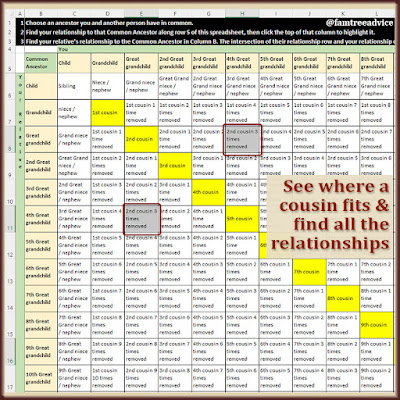When I publish a new genealogy article each Tuesday, I try to find topics to make everyone happy. For my final article of 2022, let's take a look at the 10 most popular articles from this year.
Here are the most-read articles of 2022 in reverse order.
Number 10: Your Family Tree Checkup/Tune-up List
When I find a new document for my family tree, I follow all the steps to make sure nothing slips through the cracks.
Number 9: How to Make Your Own Genealogy Correspondence Database
Make all your past genealogy correspondence easy to find. Create a categorized database of all your messages.
 |
| Have you missed any of the top 10 articles from Fortify Your Family Tree? |
Number 8: Genealogists Can Find Shocking Family Stories
My cousin never knew his grandmother's story. He only knew there were 2 boys who looked like twins. When I pulled the whole story together, it was a complete shock to him and me.
Number 7: Using Color to Understand Your Family's Last Names
Color coding lets you see right away if someone in your family tree is your direct ancestor. And you can tell which of your grandparents descends from them.
Number 6: How to Find the True Cousins in Your Family Tree
You can use the free Family Tree Analyzer tool to identify all the blood relatives in your tree. Find out how many 3rd, 4th, 5th and more distant cousins you've added.
Number 5: Why DNA Matches Appear Closer Than They Are
If your people came from small or remote towns, you may have more than one relationship to a DNA match. Multiple relationships can make them appear to be a closer cousin than they are.
Number 4: Simple Tips for Understanding Italian Marriage Records
This series of articles will help you understand Italian vital records. And you don't need to speak Italian.
Number 3: How DNA Can Help Find Your Ancestral Hometown
If your DNA matches know their ancestral hometowns or match the population there today, it's clear. Your people must have come from the same area.
Number 2: How to Make the Best of the New Antenati Website
Learn how to adapt to the latest design of the Italian Antenati website and make the very best of it. It's a treasure trove for those with Italian ancestry. Not speaking Italian shouldn't scare you away!
Number 1: 7 Days to a Better Family Tree
The next 7 days you decide to work on your family tree, pick one of these goals and work on only that one thing. No distractions allowed.
The purpose of this blog is to help you create a more professional family tree. That's why many articles are about finding errors, and improving citations and images. DNA is a popular topic. With my knowledge of Italian genealogy, Italian document articles widely read, too.
In 2023, I'll try to find new ways to engage you with tips, lists, and helpful spreadsheets. I'm open to suggestions. Just leave a comment or drop me a line. Thanks so much for reading!





